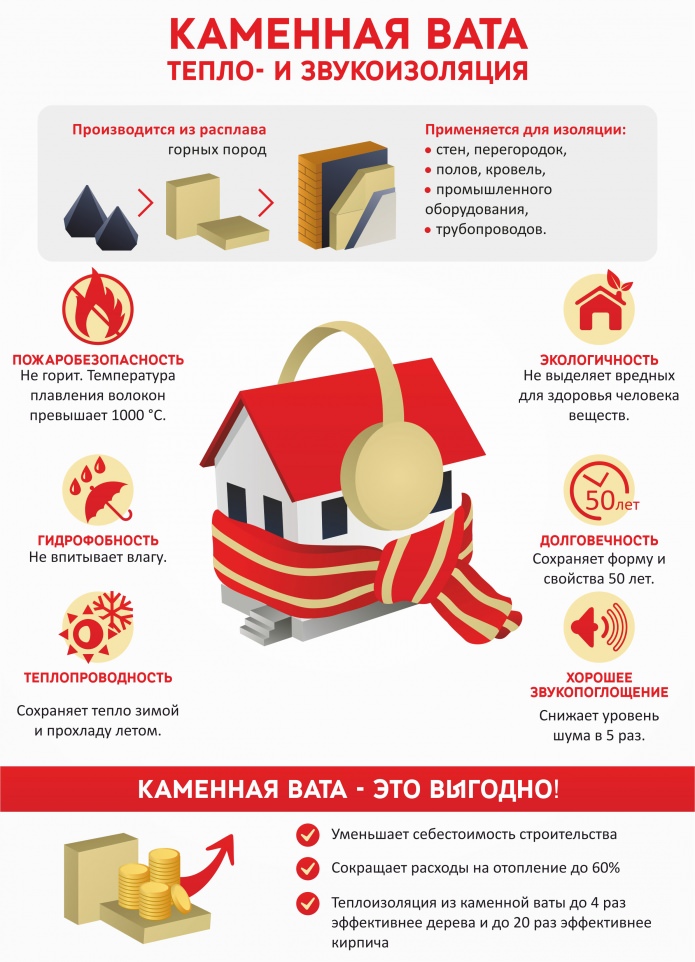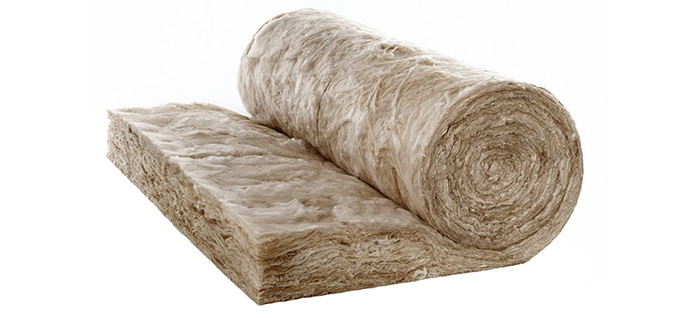Basalt (stone) wool is a modern heat-insulating material, in the production of which natural components are used. In this sense, it is close to materials such as glass wool, slag wool and is combined with them into one group – mineral thermal insulation materials.
The main of the main characteristics of stone wool is its ability to retain heat, and in this indicator it comes close to the standard: a fixed air gap. This is achieved due to the fact that the material has a very developed fibrous structure, in which a lot of air is kept in a stationary state. The fibers of this material are very thin, their number per unit volume is greater than in other materials, respectively, they can hold large volumes of air.
Rock wool insulation is obtained from very hard rocks such as gabro and basalt. During production, the rock is melted, and the melt is then passed through special filters to form fibers..
This insulation is used for the installation of walls, floors, partitions, various types of roofs, pipes and pipelines, as well as in industry to protect production units from the cold.
pros
- Fire. Basalt (stone) wool is not flammable, its fibers begin to melt only at temperatures over a thousand degrees.
- Warmly. Due to the low values of thermal conductivity, rooms insulated with this material retain heat well in the cold season, and protect from excessive heating in summer.
- Moisture. The stone does not get wet in water, and therefore the fibers obtained from rocks do not absorb moisture. This material is not afraid of rains and leaks.
- Time. One of the most unique characteristics of stone wool is its ability to retain its insulating properties for a very long time. The period during which it maintains performance is more than a century.!
- Ecology. This material does not contain substances that can harm health – therefore, it cannot release them into the surrounding atmosphere.
- Sound. Insulation stone wool, due to its structure, is also a good soundproofing material. Placed under the roof, it will dampen the sound of rain, and under the floor in the nursery, it will provide a calm rest for those around.
- The form. The properties of the material and its structure are such that it practically does not react to mechanical loads. This allows the use of basalt (rock) wool in places where it can be subjected to pressure, twisting or other influences.
- Saving. The pluses can also be attributed to the rather simple technology of laying insulation, which reduces installation costs. It is also worth considering the increased efficiency in saving heat, because stone wool insulation is twenty times superior in this indicator to brickwork. At the same time, heating costs can be saved up to 60%.
Minuses
- The negative characteristics of stone wool include, first of all, the rather high price of insulation made from it.
- In addition, it is very difficult to ensure a tight connection at the joints of the sheets..
- Another negative point: it is necessary to work with insulation in a respirator, since it can split into very small particles that are harmful to health.








